Our Blog
What to Expect When You Drop Your Pet Off for Surgery at ZimmVet
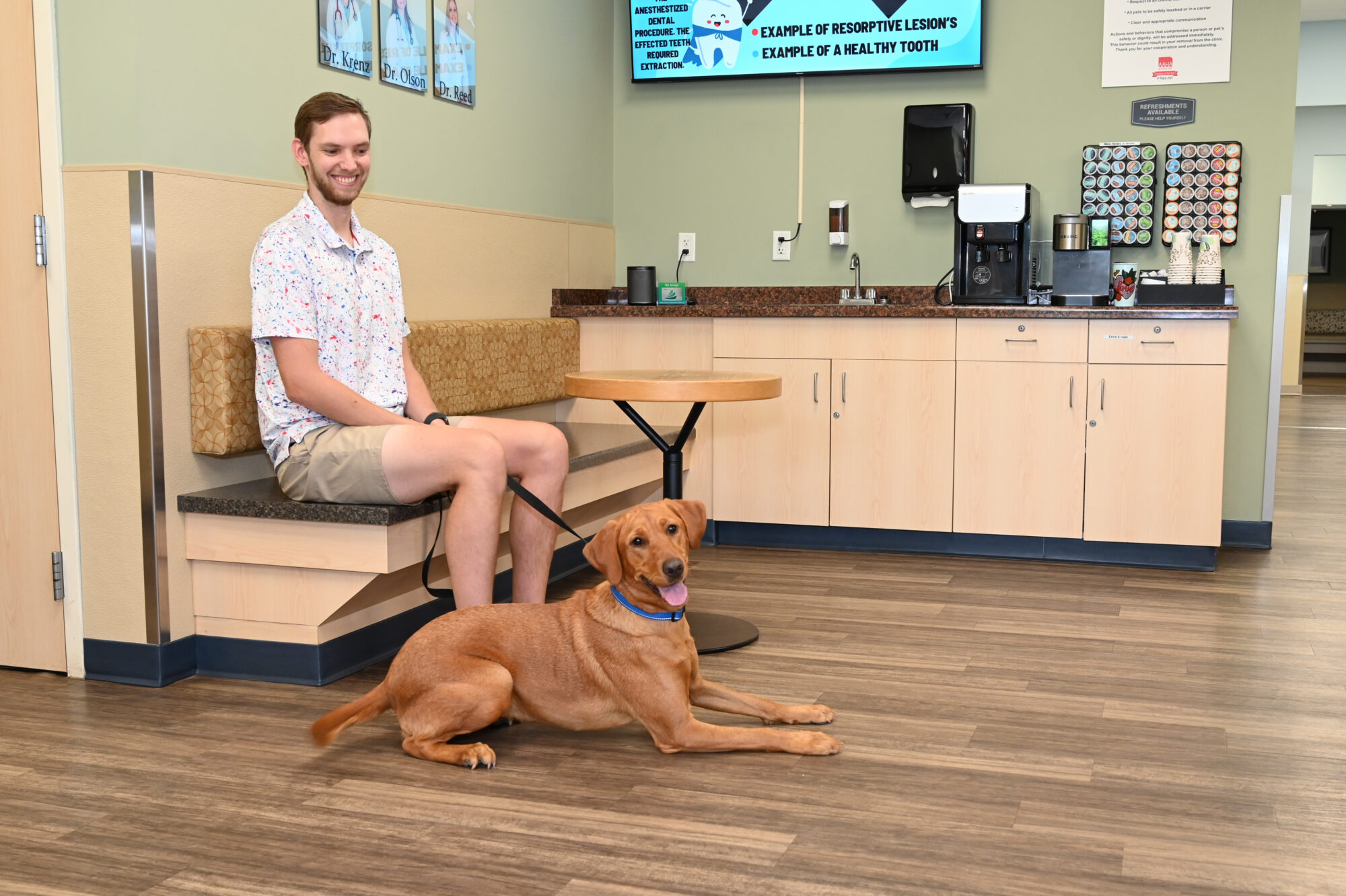
Once we complete the check-in process with you, your pet is brought into our treatment area where their surgical day begins.
Pre-Surgical Assessment
Our surgery technician starts by gathering your pet’s pre-surgical vitals, including weight, heart rate, respiratory rate, and temperature. One of our veterinarians then performs a thorough pre-surgical physical exam, which includes listening to the heart and lungs, checking lymph nodes, assessing gum color, and examining the eyes and ears. This step helps ensure your pet is healthy and ready for anesthesia.
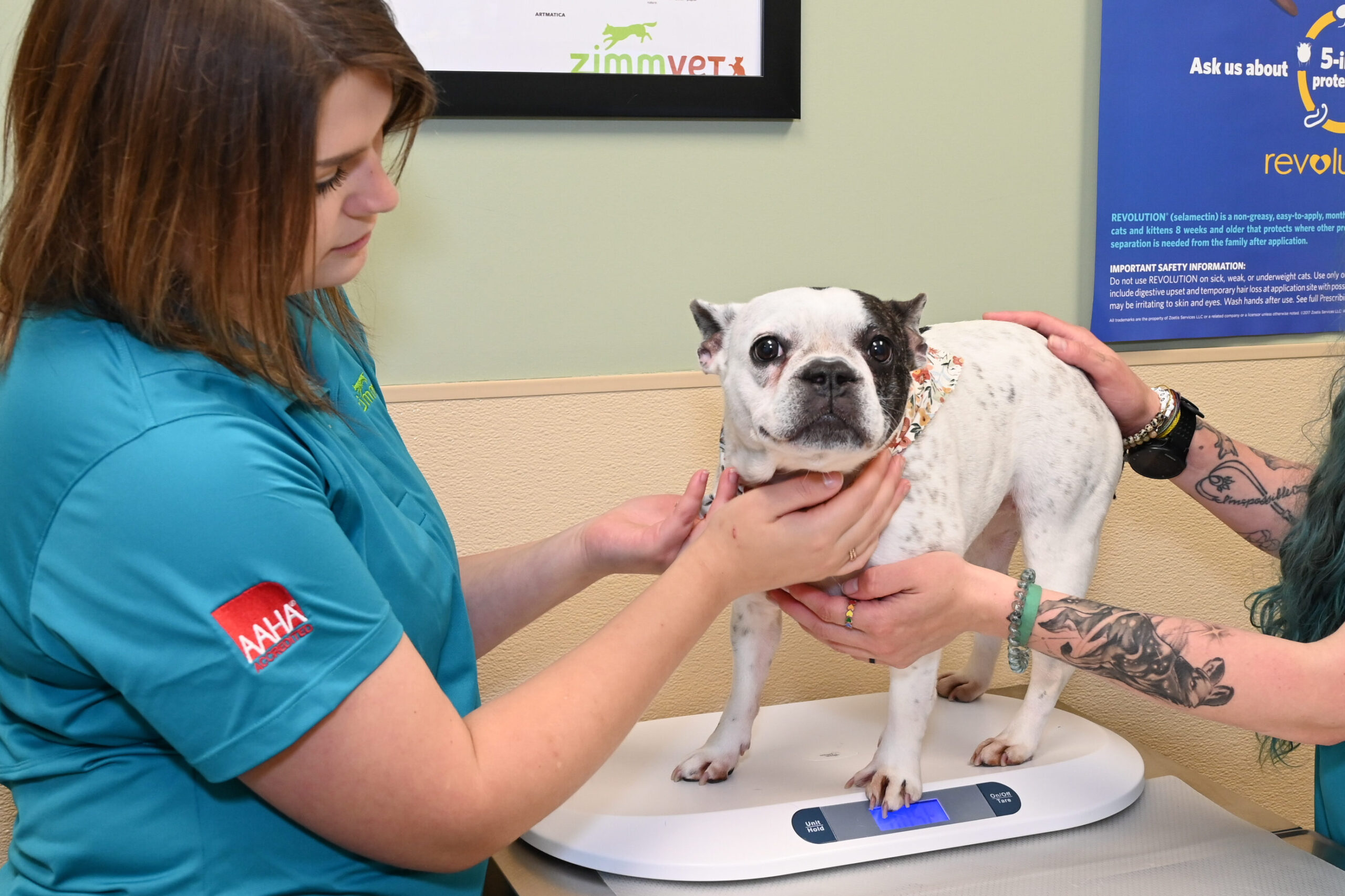
After their exam is complete, your pet is settled into a secure kennel or kennel run to relax before surgery.

Comfort & Preparation
Your pet’s comfort is a top priority. Their space is outfitted with soft, cozy blankets and warming devices as needed to help maintain body temperature. When it’s time to prepare for surgery, we place an IV catheter to allow safe administration of fluids and medications. Your pet is then given IV sedation, followed by placement of an endotracheal tube to keep their airway open and provide oxygen throughout the procedure.
The surgical area is carefully shaved and thoroughly disinfected using surgical-grade scrub solutions. A localized numbing anesthetic is also applied to the incision site to support pain control.
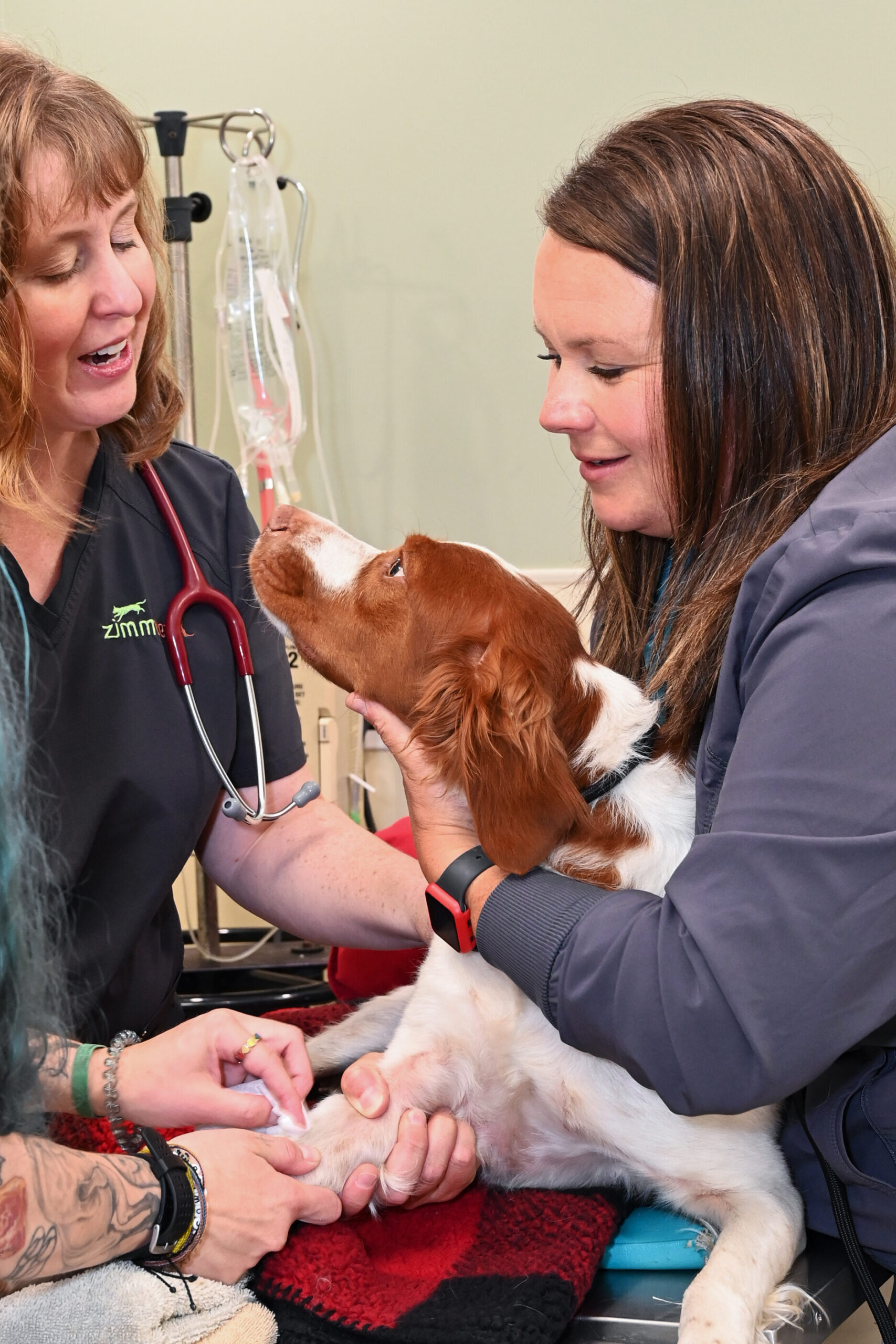
During Surgery
Your pet is moved into our sterile surgical suite and connected to advanced monitoring equipment. Throughout the procedure, we continuously monitor heart rate, temperature, blood pressure, oxygen saturation (SpO₂), and respiratory rate. Once final sterile preparation is complete, the veterinarian performs the surgery with patient safety and precision at the forefront.

Recovery & Monitoring
After surgery, your pet is returned to their kennel or kennel run for recovery. They are kept warm with heating devices if needed and snuggled into plenty of soft blankets while being closely monitored. Our surgery recovery suite features dimmable lighting and calming pet music to create a peaceful, low-stress environment as they wake up from anesthesia.
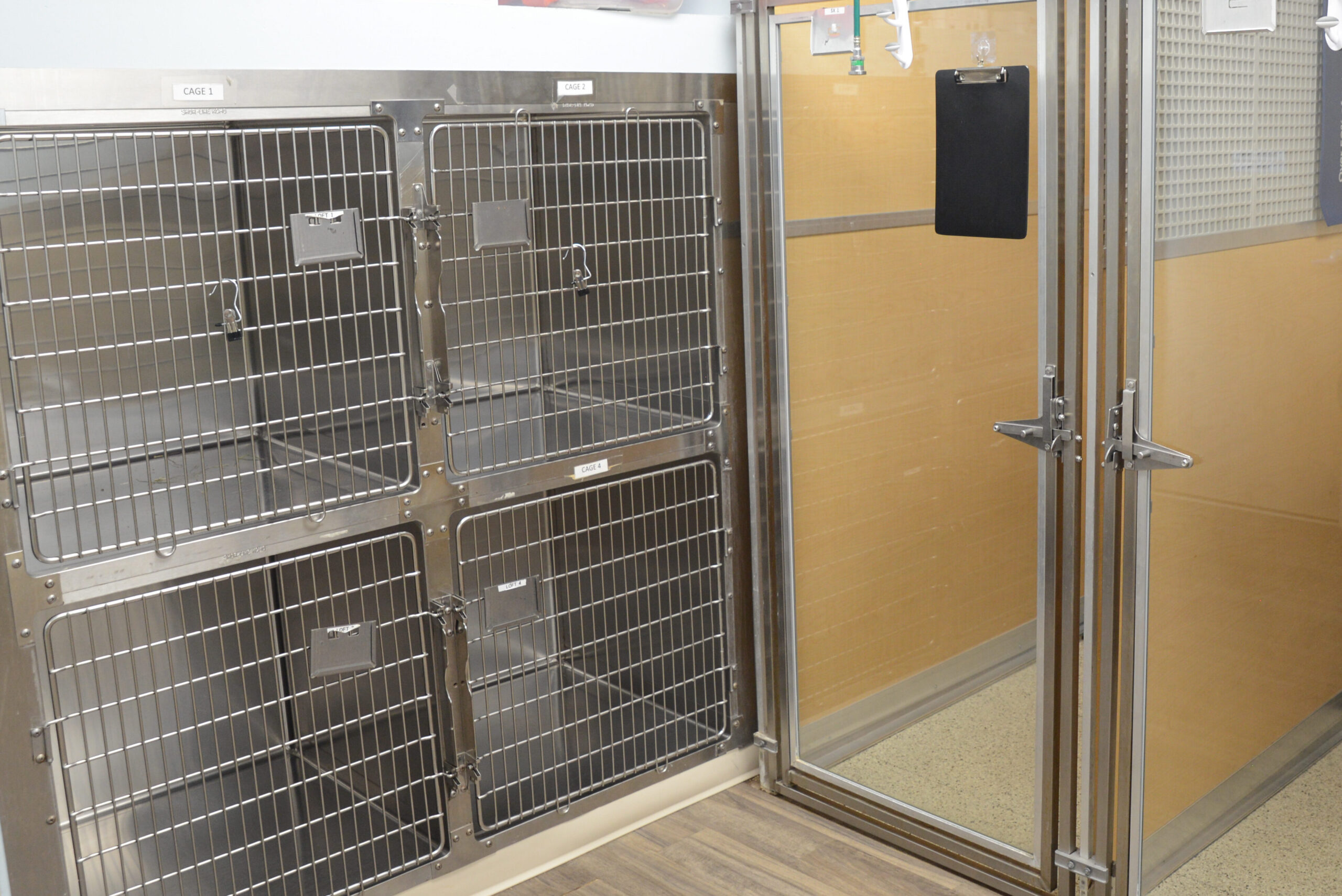
Heading Home
Once your pet is fully awake, we take them outside for a potty break, offer fresh water, and provide a light snack if appropriate. When they’re alert, comfortable, and acting like themselves again, they’re ready to head home.
At discharge, your pet will go home with their e-collar (if needed), post-operative pain medications, and detailed home-care instructions. Throughout their entire stay, your pet is treated like royalty — with frequent outside breaks, fresh water and food, cozy bedding, and an endless amount of love from our team.
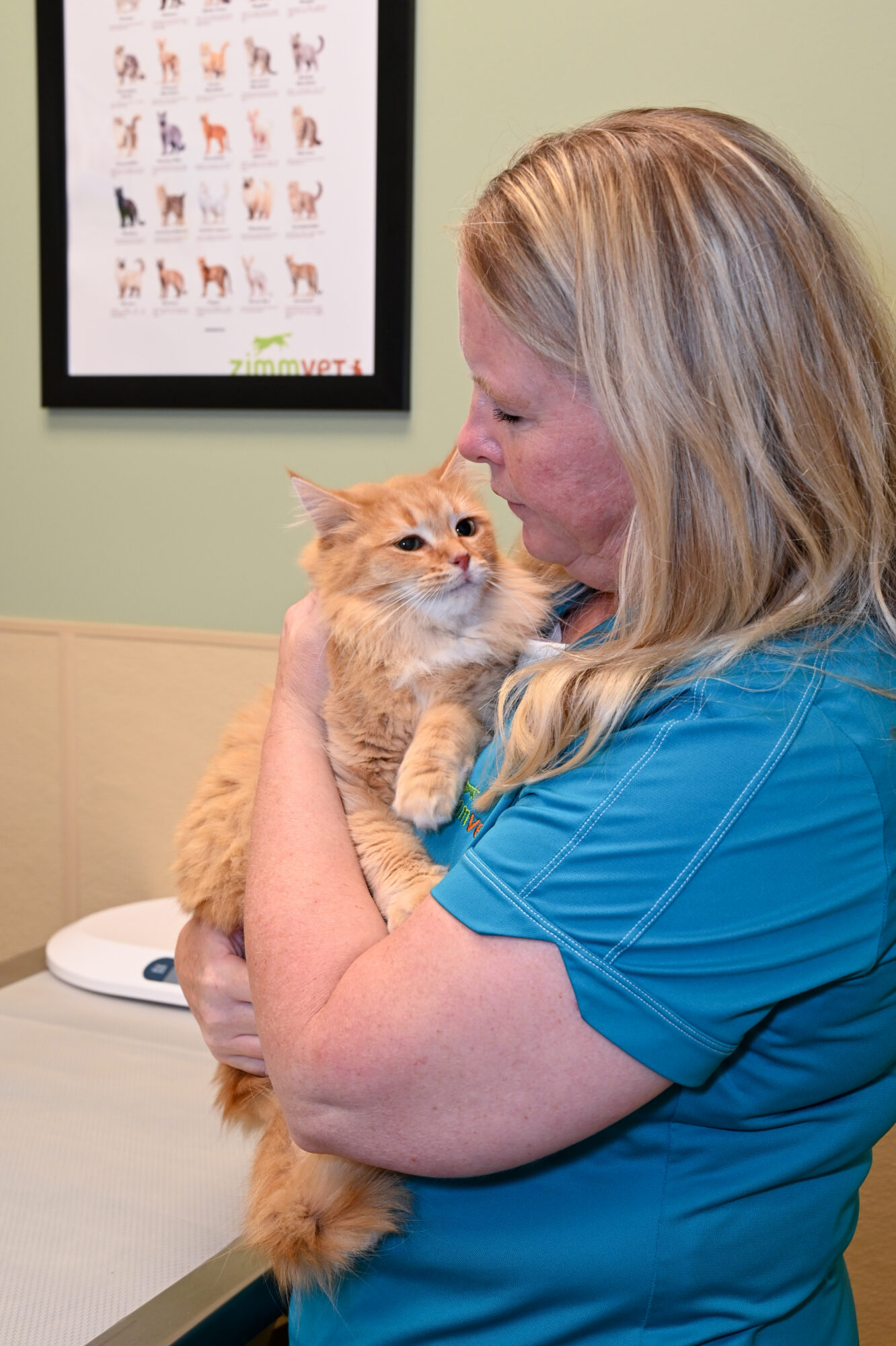
Did You Know?
Minnesota Ticks Carry More Than Just Lyme Disease
For a long time, when you thought about ticks, you probably thought only of Lyme disease. Unfortunately, changes in climate and terrain have introduced new tick species—and with them, new diseases. The good news is there are many preventative measures you can take to protect your pets.
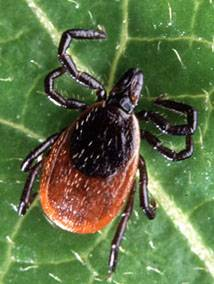
Minnesota is home to about a dozen different tick species. Fortunately, only three of those are known to carry disease. The American dog tick, commonly called the wood tick, is the most common species in our state. This tick can transmit Rocky Mountain spotted fever and tularemia—though it’s rare to find one that actually carries these diseases.
Next, we have the blacklegged tick, better known as the deer tick. This is the species most people associate with tick-borne illness, as it spreads both Lyme disease and anaplasmosis. Finally, Minnesota is also home to the Lone Star tick, which can transmit tularemia and ehrlichiosis. These persistent parasites can cause serious illness in both pets and people, making prevention especially important.
Ticks live, on average, two to three years. They must feed on blood to survive. In their first year, they prefer smaller mammals such as rodents or birds—often picking up disease-causing organisms that make them infectious for life. As they mature, they move on to larger mammals like pets, deer, and humans. A tick typically feeds for three to five days on a single host, but it can transmit disease in as little as 24 hours. Once full, it drops off and searches for its next host.
In Minnesota, ticks are most active from early spring through late fall. Even during winter, if temperatures rise above freezing or snow cover is light, ticks may still be active and searching for hosts. Before the first snowfall, female ticks lay hundreds to thousands of eggs, preparing the next generation for spring.
At ZimmVet, we see tick-borne diseases every day—whether as an incidental finding on annual lab screenings or in patients showing symptoms. We routinely diagnose Lyme disease, ehrlichiosis, and anaplasmosis. Symptoms can vary widely and may include muscle or joint pain (causing limping, stiffness, or lethargy), loss of appetite, high fever, and even bleeding disorders. Once the disease enters the body, it begins attacking your pet from the inside out.
Treatment depends on the severity of infection. Some pets require hospitalization with IV fluids, antibiotics, and round-the-clock veterinary care. Others can recover at home with prescribed medications and rest. Regardless, these diseases are painful, can be costly to treat, and are far easier to prevent than to cure.

Thankfully, prevention is simple. At ZimmVet, we carry Simparica Trio®, a once-monthly oral medication proven to prevent heartworm, intestinal parasites, fleas, ticks, and Lyme disease transmission. When paired with the annual Lyme vaccine, your pet has excellent protection against tick-borne infections.
Year-round prevention is the best way to keep your pet safe. With consistent protection, your pet won’t be an easy target for the next hungry tick!
Get Your Dog Ready for Hunting Season
By Dr. Maria Krenz, DVM – ZimmVet-763-856-4848
Many people enjoy hunting as a hobby with their dogs. A little preparation can make the time fun for you and your dog.
Flea & Tick Prevention
Fall is peak time for transmission of lyme disease from adult ticks. Fall is also when many pets become infested with fleas. There are a variety of products on the market including topical and oral options. Talk to your veterinarian about what product is best for you pet.

Internal Parasites
Hunting dogs are at higher risk to contract roundworms and hookworms from the environment. These parasites can then be passed to people. Heartworm prevention, such as Sentinel or Simparica Trio®, deworms for these parasites and should be given once a month.
Vaccinations
Make sure your pet is current on vaccinations such as Rabies, Lyme and Leptospirosis. Hunting dogs are at increased risk of these easily preventable diseases. Also, if your dog is going to be hunting with a group of other dogs, its distemper combination, bordetella and influenza vaccinations should be up-to-date.
Exercise
Just like a person, if a dog is not properly conditioned before working hard, they can suffer from performance injuries such as pulled muscles, sore joints and strained or torn ligaments. Gradually increase your pet’s activity over a couple weeks prior to the start of hunting. In addition, be sure to allow your pet time to rest while hunting.

Food
Overweight pets are at an increased risk for performance injuries as well as exhaustion. Make sure your pet is an ideal weight prior to the start of hunting season. For pets that are more than a couple pounds overweight safe weight loss needs to be done gradually over many months. Contact your veterinarian to make a weight loss plan for your pet. During hunting, a dog’s calorie intake increased. Feeding small frequent meals can help your pet keep up to the demands of hunting.
Paws
Many dogs can wear down their paw pads and form painful ulcerations. Keep protective boots on hand for your dog to wear. Dogs can suffer from cuts and debris in their eyes, especially in grass and wooded areas. Keep an eye saline solution with you, along with some bandaging material to stop bleeding until you can get to your veterinarian. Your veterinarian can help you put together a first aid kit for your pet or you can purchase a premade kit.
Senior Hunters
Senior dogs can often remain active and healthy with the help of your veterinarian. Senior pets benefit from a daily glucosamine supplement such as Dasuquin. This supplement needs to be started at least a month prior to hunting if your dog is not taking it regularly year round. Senior dogs do well on pet pain medication started a day prior to the hunt and continued daily. The goal is to control the pain before it builds up. If your pet is already on a daily pain medication your veterinarian can prescribe additional medications to help during hunting. Contact your veterinarian to make a plan to keep your senior hunter comfortable.
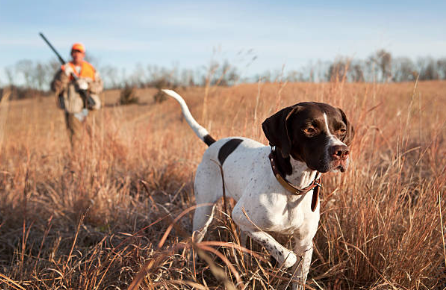
Disclaimer: This written content is meant to be educational and is not medical advice. Always consult a veterinarian about medical advice for your pet.
Lyme Disease High Risk for Zimmerman Dogs
By Dr. Maria Krenz, DVM – ZimmVet
In the Zimmerman area, dogs are at a high risk for contracting Lyme disease from a tick bite. In 2023, 1 in 12 of the dogs tested in Sherburne County for Lyme disease were positive for this painful disease. Now is the time to make sure your pet is protected. The best level of protection includes using a Lyme vaccination, tick prevention products as well as checking your pet daily for ticks.

We only see a couple ticks a year on my pet, why do I need to vaccinate against Lyme disease?
All it takes is one tick bite to spread Lyme disease. Any pet that goes into long grass, brush or wooded areas is at high risk and should be vaccinated for Lyme disease. Even though ticks prefer these environments, they can be found even on short mowed lawns or traveling across hard surfaces. The immature nymph stage of the tick is very small and difficult to see. A nymph is typically the size of a poppy seed. Once Lyme disease is contracted, it can cause swollen painful joints, vomiting, diarrhea, and lethargy and can even lead to kidney failure.
My pet has been positive for Lyme is the past, so I don’t vaccinate anymore.
Often, pets will show up positive on an in-clinic test called a 4dx test, even after Lyme disease has been successfully treated. This is because the pet has antibodies or proteins in their system from the past infection. Additional bloodwork, called a titer, can tell us if a positive test means a new infection. Anytime a pet is bitten by a tick, it can be re-infected with Lyme disease. Pets that are positive for Lyme disease are at high risk for reinfection, these pets need extra protection and yearly vaccination is especially important.
I have vaccinated my pet and they still contracted Lyme disease.
Lyme bacteria is a tricky disease, and does many things to fool a pet’s body. No vaccination provides 100% protection. At ZimmVet, we administer the vaccination that provides the newest updates to Lyme technology.
Preventative Tick Products
There are many tick products on the market. Many products that can be purchased over the counter may not work as well, as they may not be waterproof or can cause side effects in the pet. When purchasing product from a veterinarian you receive the full manufacturer guarantee and backing, along with money saving rebates or free doses. At ZimmVet, we carry the top of the line tick prevention products. Bravecto is an oral chewable tick preventative that lasts for 3 months. Simparica Trio is a monthly oral chewable that is an all in one and provides heartworm prevention and deworming besides flea and tick prevention. Clients with small children especially like oral products and they do not have to worry about kids touching the pet after application. Collars and be useful in combination with other products but are typically not waterproof so can leave a pet unprotected for periods after swimming or bathing. In some pets, for added protection we combine use of products. Using more than one product should only be done under veterinary direction.
Minnesota and the Zimmerman area have a high prevalence of Lyme disease. By vaccinating against Lyme, using a proven flea and tick treatment monthly Bravecto or Simparica Trio, and removing ticks daily, you will give your pet the best chance of staying healthy.
For more information visit www.dogsandticks.com or www.petsandparasites.org
Disclaimer: This written content is meant to be educational and is not medical advice. Always consult a veterinarian about medical advice for your pet.
Allergies in Pets –
By Dr. Maria Krenz, DVM – ZimmVet
Imagine that you have burning eyes, itchy skin, or hair loss, but without the ability to talk. Just like people, many pets suffer from allergies. If you have owned a pet with allergies, you know the common signs: skin redness, scratching, licking, chewing at the skin, ear and skin infections, hair loss, excessive paw licking among others. Pet allergies are a medical condition that requires lifelong management to control the symptoms. Pets that are affected only during certain times of the year, such as the Fall, need to start treatment prior to when allergy signs begin for best management.

Types of Allergies
Atopic Dermatitis, also known as Atopy, is the term for inhaled seasonal pet allergies from sources such as pollens and molds in the environment. Pets that itch and scratch only during one season during the year have Atopic Dermatitis. Many pets have multiple things they are allergic to causing them to have allergy symptoms year round. Weeds such as ragweed is the most common trigger for allergies in the fall. Fall allergies last until we have a couple hard frosts.
Start Treating Now
Pets that suffer from fall allergies need to start treatment to manage the symptoms usually mid-July. It is best to work with your veterinarian to create a plan that is best for your pet. Common treatments include the following.
- Antihistamines: Benadryl is a common medication used to control allergies. Often people do not give a high enough dose to help the pet, it also must be given at least 2-3 times per day during the entire allergy season. Some pets will get drowsy on the medication. Other antihistamines include cetirizine, hydroxyzine, and others.
- Shampoos: Bathing a pet can help to remove allergens that are on the surface of the skin. Often, pets with allergies have a poor skin barrier, which allows more allergens to get into the body. Bathing is usually needed at least every 2-3 days. Some shampoos may contain anti-itch medications, and antibiotic or antifungal medications to control secondary infection.
- Topical Sprays: For pets that are itching in one general location on their body, a topical spray that includes a hydrocortisone and antibiotic can help.
- Omega Fatty Acid Supplements: These supplements are a natural anti-inflammatory agent, and can help reduce itching and help with general skin health.
- Dermaquin: This product is a natural supplement that comes in a form as a soft chew. Dermaquin helps strengthen the skin barrier which decreases a pet’s allergic response.
- Apoquel: This is a very effective allergy medication. Apoquel directly affects the molecule that causes itch and inflammation in dogs. Apoquel is a tablet medication that is given daily.
- Cytopoint: This allergy treatment is an injection. The effects last about 4-8 weeks. Its mechanism is interrupting the pathway that causes itch and inflammation in dogs.
- Other allergy treatments include immunotherapy and Atopica. These treatments need to be given all year round to be effective.
Infections also cause Itch
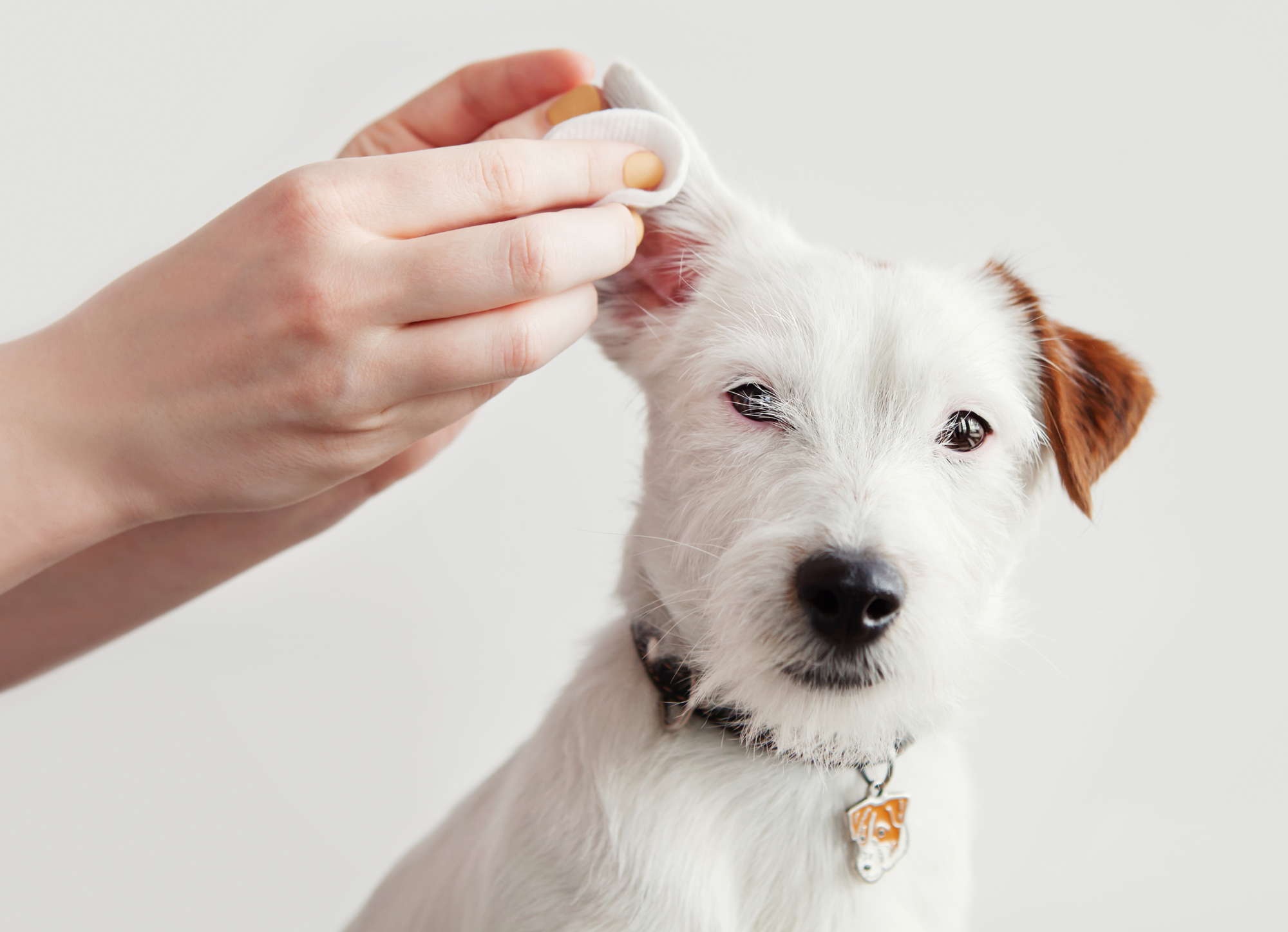
Allergies can be a very frustrating condition for pet owners. Your veterinarian is here to help find the best treatment for your pet. Often, pets with allergies develop secondary bacterial and fungal skin infections that need to be treated with oral and topical medication. Ear infections are also common secondary condition that would need prescription medication. For tough cases, your normal veterinarian may refer you to a veterinary dermatologist (skin specialist).
Disclaimer: This written content is meant to be educational and is not medical advice. Always consult a veterinarian about medical advice for your pet.
Add Years to Your Pet’s Life -By Dr. Maria Krenz, DVM
Advances in medical technology and preventative care are allowing pets to live longer, happier lives. It is not uncommon for cats to reach 20 plus years of age, and small dogs to live 14-16 years. More often pets are seen as a family member and people are looking for ways to spend as much time as possible with their beloved pets. Owners can influence their pet’s lifespan and quality of life with a few simple care guidelines.
Ideal Weight-Add 2 Years of Pet Life:
Extensive research has been performed to evaluate the effects of obesity on lifespan and medical conditions, such as arthritis. Data shows that an ideal weight pet will live on average two years longer as compared to its obese littermate. Since pet owner’s control their cat or dog’s feedings, lifespan is directly influenced by an owner’s ability to regulate calories and provide adequate exercise.
There are many resources available for pet owners to help their pet’s lose weight. The first step is to schedule an appointment with your veterinarian to set a goal weight for your pet, calculate their calories needed for safe weight loss and create a weight loss plan.
There are many tools available to help pet owners achieve their pet’s weight loss goals. Talk to your veterinarian about what works best for your pet.
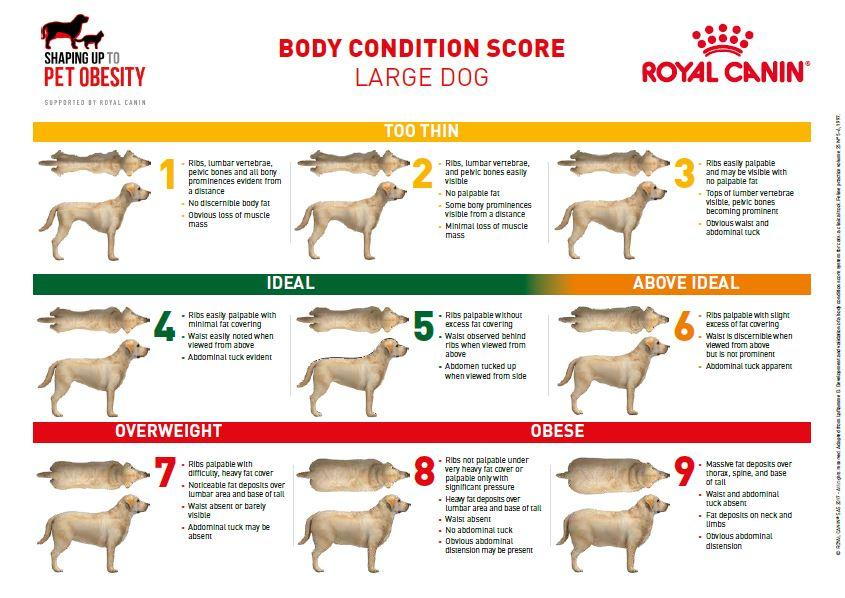
Regular Home and Professional dental Care-Add 4 years of Pet Life:
Regular oral care and keeping a pet’s mouth healthy has been documented to add 4 years to their lifespan. Dental disease causes more than just oral pain and infection; it also impacts your pet’s organs, such as heart, liver and kidneys. Daily home dental care with products approved by the VOHC (Veterinary Oral health Council), will help keep your pet’s mouth healthy. This can include daily brushing, using a chew or water additive. Besides home care, pets also need professional dental cleanings, just like humans who go to the dentist. Your veterinarian will examine your pet’s mouth during their wellness exam and indicate when a dental cleaning is necessary.

Regular Veterinary Preventative Care:
Your veterinarian is available for more than just taking care of sick pets, he or she is your pet’s partner in preventative medicine. Yearly exams for pets under 7 years of age and twice yearly exams for pets over 7 years of age can identify problems before they become severe. Part of the wellness visit should include bloodwork to screen major organ functions such as your pet’s liver and kidneys. Any program to keep your pet healthy will include administering appropriate vaccinations, deworming and using products to prevent common illnesses such as Lyme disease.

Disclaimer: This written content is meant to be educational and is not medical advice. Always consult a veterinarian about medical advice for your pet.
Preventatives for Pets

As summer comes to a close, and the cool of fall begins, everyone is preparing for sweaters and pumpkins. With the change of the season, it can be easy to forget that as we gear up for cool weather, pests like ticks and fleas do not. It is important to maintain preventatives for your pet all year round. Let’s review some of the important reasons to keep up on preventatives for your dogs and cats.
Skin Problems
One reason to use prevention against fleas and ticks is because they can cause skin problems for your pet, and your family. The tiny pests can cause irritation of the skin when they bite, leading to itching and redness. In some cases, they can cause a allergic reaction.
The Costs
In addition to irritation, the presence of fleas and ticks can quickly become overwhelming. When fleas and ticks get into your home, they can quickly populate and spread, making them difficult to get rid of. It can be very costly to treat an infestation in your home, and can take more than one treatment because of the varying lifecycle of the little bugs.
On top of this, if your pet is infested, they will also need treatments. This can range from flea dips to topical and oral medications in order to get rid of the pests.
Preventatives Stop Illness
The number one reason for preventatives is to stop the spread of illnesses from fleas and ticks to your pets. There are a variety of illnesses that these small bugs can carry, and spread to your pets and your family. Fleas in the US commonly transfer flea-borne tape worms, cat scratch fever (bartonellosis), murine typhus, and flea-borne spotted fever.
Ticks can spread illnesses such as Lyme disease, anaplasmosis, leptospirosis, Rocky Mountain spotted fever, rickettsiosis, and more. Fleas and ticks spread these illnesses through their bites. The more they bite, the more likely the to infect your pet. Preventatives are designed to lower the chance by killing off fleas and ticks when they get on your pet and try biting them.
Does my pet need preventatives?
The short answer is – Yes! Fleas are small, and move quickly. Ticks can also be easily missed, ranging in size from as small as a poppy seed, to as large as the eraser on a pencil. It can be difficult to find these pets on your pets, especially cats since they groom themselves so often!
Even if your pet is an indoor cat, or a small dog that rarely goes outside – they still need preventatives! All it takes to pick up fleas or ticks, is for you to have them on your clothes when you come inside. Even a brief step outside by your dog to use the bathroom can expose them.
As a result, by the time you notice the presence of fleas or ticks in your home or on your pet, it may already be too late. Veterinarians recommend you keep your pet on preventatives year-round. Here in Minnesota, these pests are present all year.
You can read more about Flea and Tick Prevention from our previous blog. You can look up prevalence of tick and flea borne illness near you checking out the Parasite Prevalence Maps.
National Back-to-School Month – For Your Dog!
As the summer starts to come to an end, many families are preparing for going back to school as apart of National Back-School Month. But many people forget that other members of their family can also go back to school – the dogs! There are many reasons to put your dog through obedience training. As you keep reading, we will go through some of the biggest ones.
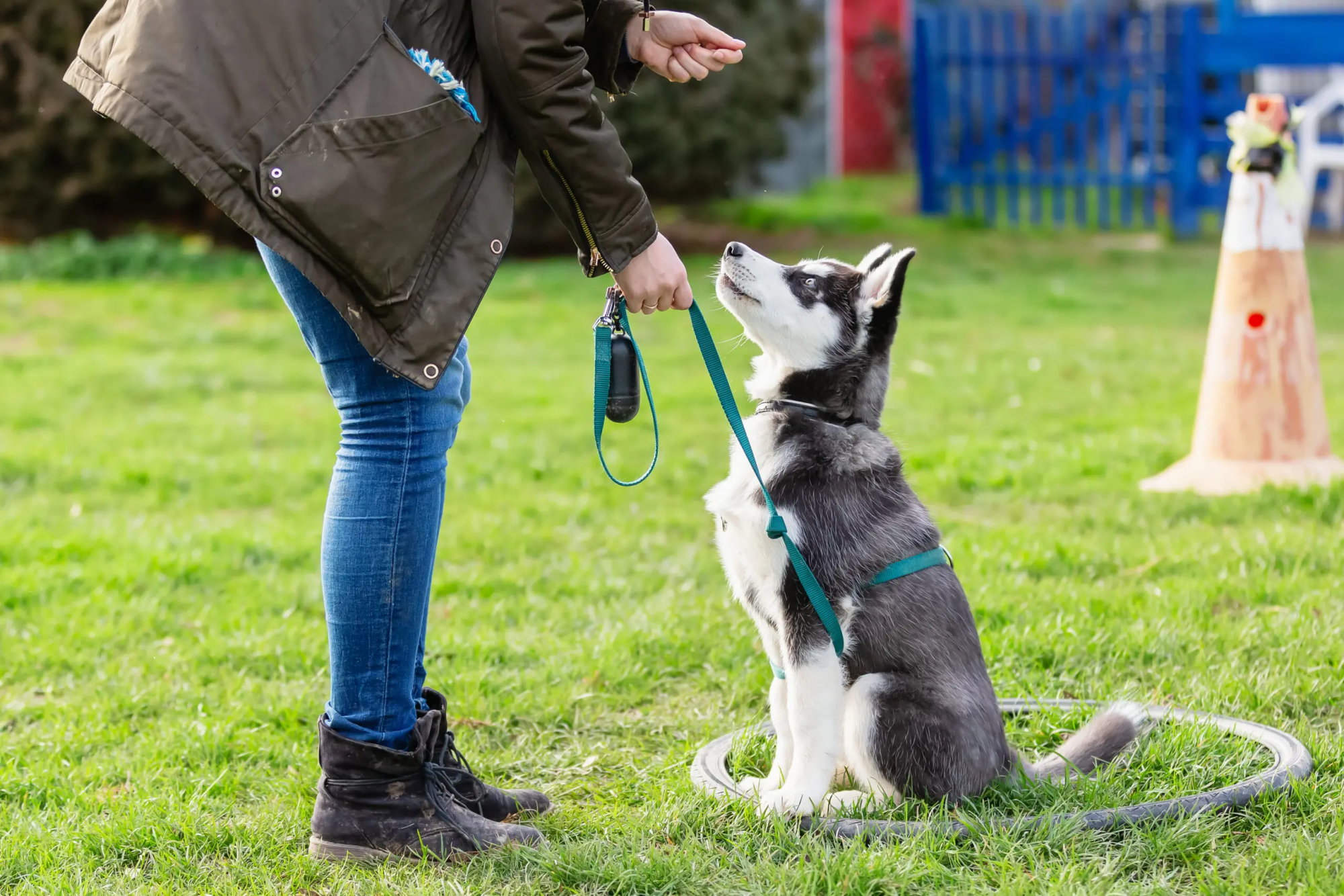
Building Trust Through Training
When you attend classes with your dog, the bond between you can grow stronger. The dog will begin to look to you for guidance on what to do. You, in turn, will grow to understand more about what your dogs behaviors will be, creating boundaries for them to follow, and knowing they will listen to your commands.
Make Life Easier
Obedience classes help to address negative behaviors in dogs. Whether they are jumping on your friends when they come over, or they have destructive behaviors – training can help. You can curb the negative behaviors and gain control. Additionally, regular training sessions can help stimulate your dog mentally and physically. This, in turn, can keep them from growing bored, and looking for other, more negative outlets like chewing up your couch cushion!
Communication With Your Dog
Training your dog gives you the opportunities to get to know them better. You can learn more about their personality, and how to understand them. In turn, your dog can learn the cues you are giving, and understand the behaviors you are expecting. It can also help your dog to come out of their shell. Positive reinforcement during training can encourage your dog to interact more with not only you, but the environment around them. This can also lead to a higher level of comfort when introducing new experiences to your dog!
Every Dog is Unique
Every training course is not going to fit with every dog. Some may be done to improve specific behaviors. Or, you may attend a course designed for your dog’s specific breed and their needs. If you have a dog that has been bred to dig, they may be digging your yard up. However, you can work specifically with a trainer to address this issue, and train your dog to use a specific outlet for digging – like a sandbox!
There is also a choice between group trainings and one-on-one trainings for you and your dog. Group sessions are typically a course you attend with your dog, training alongside other humans and dogs. This type of training will normally follow a specific curriculum for the training that is designed to cover a variety of tricks and behaviors.
One-on-one training is often used to address specific behaviors, or for dogs that have behavior and aggression issues when exposed to other dogs.
Take the time to look into training for you and your pup today! You can find local classes by checking out your local PetSmart Training Courses, or you can check out a variety of trainings offered by the Animal Humane Society. For tips on training with a brand new puppy, and how to start, you can check out our blog Training Talk: Bringing Home a New Puppy!
Disclaimer: This written content is meant to be educational and is not medical advice. Always consult a veterinarian about medical advice for your pet.
Microchips: Why do They Matter?
Microchips are becoming more and more common. You may have been asked by your veterinary team about microchipping your cat or dog last time you visited. But you might be asking – why? There are a number of reasons to get your pets microchipped. Keep reading to learn more!

Microchips Help Lost Pets get Home
Accidents happen. In this case, we are referring to a cat who slips past you to get outside, or a dog who who gets off their leash. You might see your pet disappear down the road. Even if you begin looking for them immediately, you may not find them. They may even be found by someone else before you.
This is where a microchip comes in! If your pet is microchipped, then they can be checked by an animal shelter or veterinarian and identified. Microchips hold your contact information, and some providers even send out lost pet notifications on your behalf. Microchips make it more likely to have your lost pet come home. In fact, the American Veterinary Medical Association references a study of over 7,700 shelter pets, which found that microchips make you more likely to be reunited with your pet! Dogs with microchips were returned to their owners at double the rate of dogs without microchips. For cats, the return rate was even more dramatic with microchips, at over nineteen times more likely to be returned to owners if they had one.
Do Microchips Harm Pets?
Microchips are able to be placed during a routine visit with your veterinarian. They are placed using a hypodermic needle, and don’t hurt any more than normal vaccines and injected medications for your pet. If your pet is already going under anesthesia, such as for neutering or spaying, the microchip can be placed at that time as well.
What about your privacy?
Don’t worry. While microchips store your contact information, it is only used in the event that your pet is lost and someone scans it to then contact you. Some manufacturers offer additional communication, such as newsletters or lost pet alerts, but you can typically opt out of these. Overall, the only information found in the microchip database is the information you choose to provide. It is important to make sure you register the microchip so it will have correct information to reach out and contact you.
Do Microchips replace ID and Rabies tags?
The simple answer is: No! While microchips are great as a permanent method to identify your pet and provide your contact information, nothing can fully replace a collar with tags on it. Tags on a collar are usually the quickest way to identify a pet and return it to it’s owner. Additionally, the rabies tag should always be displayed on your pets collar. It allows people to confirm your pet is vaccinated against the dangerous illness. Plus, the rabies tag numbers can be another way to trace your pets identity and return them to you.
For additional information on what to do in the event of a lost pet, you can check out our blog covering lost pet resources.
Disclaimer: This written content is meant to be educational and is not medical advice. Always consult a veterinarian about medical advice for your pet.
Camp Fire Safety Tips
We are in the peak of summer, which means trips to the beach and trips to the campground. Bringing your dog along to the campground with you is always fun. But there is a big safety hazard when your dog comes with you: the camp fire pit. Here are some things you can do to keep your pet safe during your camping trip.

Camp Fire Pit Training
The first step in camp fire safety is to teach your dog that the fire pit is not a place they are allowed. By teaching them to steer clear of the pit, they are less likely to approach it. Even when the fire pit is empty and unlit, your dog should not be allowed to touch it. There are many tempting things that go into a fire pit that a dog might want, especially if your dog loves playing with sticks! Your kindling and large sticks placed in the pit may be attractive toys to your dog. Setting a clear, off-limits boundary can prevent them from approaching to take the sticks, especially when the fire is lit!
Food at the Camp Fire
One of the best parts about camping is cooking over the open flames of a fire pit. Cooking can be a big temptation for dogs to get close to the fire. Avoid giving them pieces of food while cooking or sitting around the camp fire. Doing so cause the dog to feel comfortable approaching the fire with or without you. The same goes for tossing food scraps in the fire. The smells of good, especially anything left over after the fire is put out, can attract your dog. They may dig in the pit to try and get the food, which could be covered in chemicals from other burning trash nearby. Worse still, there may be hot embers buried in the ashes that could burn and injure your dog.
Stay Aware of Your Dogs Presence
Many pets are able to roam around the campsite freely on long leashes, which isn’t a bad thing. It lets them stretch their legs and enjoy the trip as much as you are. Being close to the fire is dangerous though, even if it’s a few feet away. A gust of wind can pick up embers and drop then in the area surrounding the fire. If your dog is too close, these embers could land on them and hurt them. The wind can also carry the smoke to your dog. If you’ve had camp fire in your face before, you know it can burn the eyes and make it difficult to breath. The same thing happens to dogs. Some exposure is inevitable, but you should be aware off the signs that your dogs has breathed in too much.
Symptoms to watch for include:
- coughing
- wheezing
- loud or difficult breathing
- disorientation
- fatigue
- reduced appetited or thirst
- red, watering, or irritated eyes
To much smoke can cause these symptoms in senior and younger pets commonly. However, the most at-risk breeds are brachycephalic breeds, or breeds with scrunched noses. Try to keep your dog upwind of the fire whenever possible to avoid possible complications.
Equipment Hazards
Like at home, you will need to be smart about the storage of your camp fire equipment. It’s important to be aware of and properly store anything that gets hot, is sharp, or toxic chemicals for the fire when not in use. Be sure to keep sharp objects, like axes, put away after use. Keep items hot from being placed into the fire, such as cooking equipment, out of reach of your dog while they cool. When it comes to lighter fluid, put it away after you get a fire going to prevent your dog from getting exposed to it.
For information on safety for your pets with other fires, such as home or wild fires, check out this article by the ASPCA. For some summer treat ideas for your dog, check out our blog post here.
Disclaimer: This written content is meant to be educational and is not medical advice. Always consult a veterinarian about medical advice for your pet.


